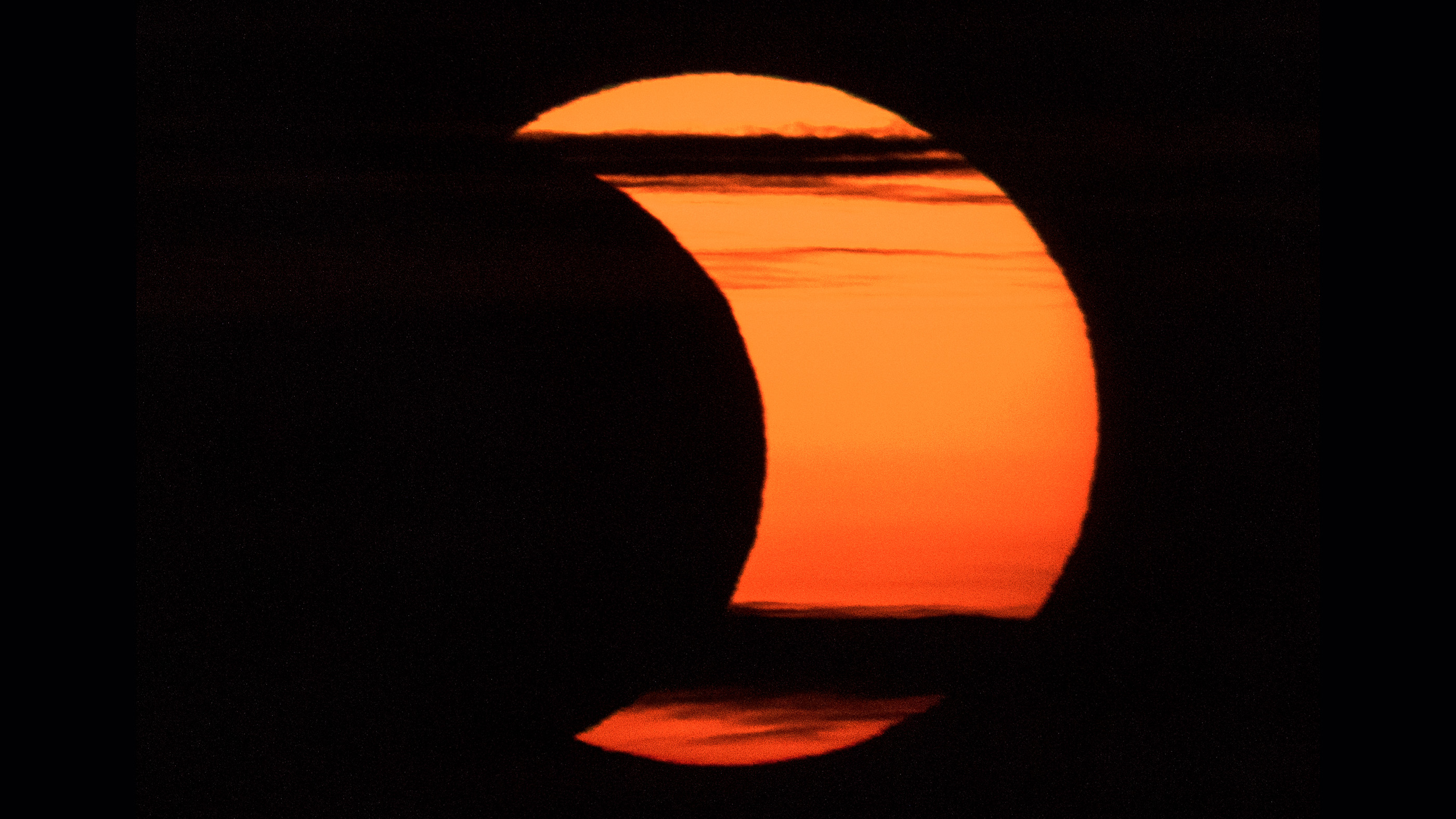The last partial solar eclipse of 2022 is today, here’s what you need to know
The moon will block out the sun across Europe, north Africa, the Middle East and parts of Asia

The moon's dark shadow will pass in front of the sun on Tuesday (Oct. 25) in a partial solar eclipse visible from most of Europe, North Africa, the Middle East and the western parts of Asia.
The solar eclipse will begin in the U.K. at 10:08 a.m. BST (9:08 a.m. UTC), when the moon's silhouette will slowly pass over the sun's top left side, reaching a maximum at 10:59 a.m., at which point 15% of the sun’s surface will be obscured.
The eclipse will be much more visible further east, where in Russia's Western Siberian Plain, near the city of Nizhnevartovsk, onlookers will be able to see the moon block out 86.2% of the sun around the time our solar companion is setting in the sky. Elsewhere in Eastern Europe and eastern Asia, such as Finland, Sweden, Norway, and Northwest India, the sun's surface will be more than 60% covered by the moon. Iceland, Germany, eastern France, Italy, Greece, Egypt and southwest India will see a predicted eclipse of around 40%.
Related: Mars' death-spiraling moon captured in gorgeous eclipse video
If you happen to be in any of these parts of the world and want to take a look, remember to wear solar eclipse glasses over your eyes and place solar filters over the objective lenses of cameras and telescopes to avoid the threat of permanent eye damage.
If you are unable to catch the eclipse in person, fear not: You can watch it live at a number of websites, including a stream viewing the eclipse over Rome that begins at 5:00 a.m. EST (9:00 a.m. UTC) right here at Live Science, which will host the Virtual Telescope Project broadcast.
The next eclipse event will be the total lunar eclipse on Tuesday, Nov. 8. The eclipse will be visible from North America, parts of South America, central and eastern Asia, Australia and New Zealand.
Get the world’s most fascinating discoveries delivered straight to your inbox.
Live Science would like to publish your partial solar eclipse photos. Please email us images at community@livescience.com. Please include your name, location and a few details about your viewing experience that we can share in the caption.

Ben Turner is a U.K. based writer and editor at Live Science. He covers physics and astronomy, tech and climate change. He graduated from University College London with a degree in particle physics before training as a journalist. When he's not writing, Ben enjoys reading literature, playing the guitar and embarrassing himself with chess.
